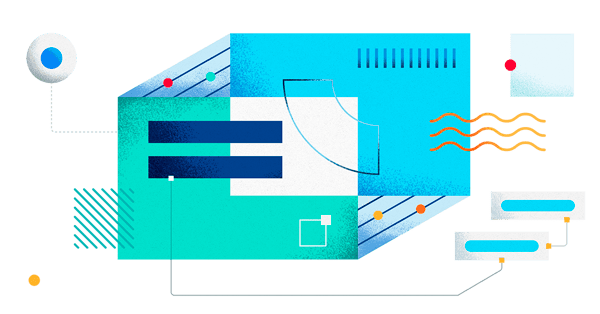Mergers & Acquisitions
Integrate and Consolidate Your Data
Accelerate integration and data consolidation while understanding the level of compliance in inherited systems.

Key Benefits
Generate Greater Value
McKinsey Global Institute estimates that companies could generate $9.5 trillion to $15.4 trillion in business value by investing in artificial intelligence tools like data lineage.
Streamline M&A Processes with Active Tags
Highlight relevant information in the context of the data pipeline with color-coded active tags.
Scan and Process Nearly Any Environment
With 50+ scanners available, you can visualize the movement of data in almost any environment and save time and money finding areas where revisions are needed.
Don’t Face Surprises In Your Merger or Acquisition
Mergers and acquisitions happen for many reasons, and the context is always changing.
IT teams may be going into their new data environment completely blind, unsure of what applications, processes, and data they have inherited. Even in cases of the friendliest agreements, the acquiring company may still be blindsided by the sheer quantity of scripts in the new environment.
In most M&A situations, manual data lineage is overwhelmingly expensive.
Manta’s automated data lineage platform uses metadata to build a map of how data is transformed, used, and processed in your environment and can detect changes within data tables and show you how they affect downstream applications. Moreover, lineage delivers visibility at multiple levels to provide understanding across all departments and job titles.
On-Demand Webinar
Ignite Migration Projects and Kick M&As into High Gear with Data Lineage

How Manta Helps
Our data lineage platform is uniquely positioned to help you quickly assess and activate your M&A data. Manta’s automated data lineage helps you integrate quickly, while remaining compliant, and gain full visibility into your data and how it moves throughout your organization.
Use Active Tags for Better Visibility
Reduce the cost-per-item of manual tagging by up to 10x and improve the quality of your lineage. These are color-coded attributes that are fully customizable and enable you to highlight information relevant to you in the context of the pipeline.
Minimize Downstream Failures
Quickly identify how data is flowing through your new environment, how it is transformed, and the sources of its origin to plan your migration and minimize downstream impacts.
Understand Historical Revisions
Understand how changes to one application or data table affect other systems in your IT environment.
Activate Metadata for Contextual Insights
Bring intelligence to metadata management with an automated solution that helps you drive productivity, gain trust in your data, and accelerate digital transformation.
FAQs
Why is data lineage important?
Data lineage provides a full overview of how your data flows through the systems of your environment via a detailed map of all direct and indirect dependencies between data entities within the environment. This gives you a greater understanding of the source, structure, and evolution of your data.
What are some examples of data lineage?
Examples of the types, sources, and processes of data lineage include:
Pattern-Based Data Lineage: This technique reads metadata about tables and columns and uses the information to create links representing possible data flows from common patterns or similarities. Pattern-based lineage is the best approach for identifying manual data flows happening outside the system—like copying data to a flash drive, modifying it on another computer, or storing it on a different part of the system.
Design Lineage: This technique looks directly into the code that processes and transforms data records. This is “code” in the broadest sense—SQL script, a PL/SQL stored procedure, a macro in an Excel spreadsheet, or the mapping between a field in a report and a database column or table. Parsing and reverse engineering this code is much tougher than parsing log files, and it requires specialized scanners for all supported technologies. This diversity gives design lineage the advantage as the best approach for eliminating data blind spots.
Run-Time Lineage: This technique relies on run-time information extracted for the data environment. Run-time lineage is valuable for incident resolution because it provides accurate information about the flow of a specific data element. However, it only captures information about recently executed data flows and can be lacking in transformation details because not everything can be logged, especially if you’re dealing with more complex algorithms.
Manual Data Lineage: The process of manual data lineage analysis starts at the top with your people and documenting the knowledge in their heads. Then, it’s inputting that information into spreadsheets or other straightforward mapping mechanisms so the lineage can be defined. Manual data lineage analysis is done using code as a source, which is analyzed manually.
Self-Contained Data Lineage: This approach uses logs as a source and a tool that fully controls every data movement for full insight into the whole data processing workflow. It is limited to the controlling platform, meaning anything that happens outside the controlled environment is invisible, which can be limiting.
External Automated Data Lineage: This approach can use data, logs, or code as its primary source, and it is versatile enough to combine sources and approaches. This versatility allows it to be adjusted based on level of understanding and user needs. It is fully automated, plus it has external analysis designed to handle the diversity of your data environment. It doesn’t require that all the data processing be done on one platform or by one tool, and it’s not reliant on one source.
What is the purpose of data lineage?
Data lineage helps you tame data complexity and gives you a full overview of how your data moves across systems, where it originates from, how it transforms along the way, and how it’s interconnected. Such an overview will help you boost your data governance efforts, increase overall trust in data, achieve full regulatory compliance, accelerate root cause and impact analyses, roll out our frequent bug-free releases, painlessly migrate to the cloud, and more.
Why is it important to track data flow?
Data flow is the movement of data throughout your environment—its transfer between data sets, systems, and/or applications. Having full visibility into how your data flows through the systems of your environment not only gives you a greater understanding of the sources, structure, and evolution of your data but also helps you harness data complexity, see through data blind spots, and prevent incidents before they occur. This is the insight data lineage can provide.
How do you build a data lineage solution for databases?
Building a data lineage solution for databases encompasses mapping the various data elements—the files, tables, views, columns, and reports within databases—and the processes and algorithms they go through. As an automated data lineage platform, Manta can connect to a database, scan the metadata, and read all the programming code and logic stored in it. Using this information, Manta creates a detailed visualization of the data lineage that can be pushed to any third-party metadata management solution or viewed in Manta’s native visualization.
How can data lineage help data scientists make better reports?
As a result of using data lineage, data scientists can locate the right metrics for their reports faster and easier, saving them time and effort. Additionally, the data can be traced back to the source technology, giving greater confidence in the metrics used in the reports.
How do I fix my broken reports?
Data lineage provides a detailed data map, including a full overview of how your data flows through the systems of your environment, that can help you understand where a report sources its data from and how it is transformed and manipulated along the way. It also allows you to compare lineage data flows at different points in time. Comparing a data flow that no longer works to a data flow that does work can help you determine what has changed, and thus, where to focus your attention to fix broken reports.
How can data lineage help audit data standards?
By providing visibility into the flow of data throughout enterprise systems and the entirety of the data lifecycle, data lineage provides a “trail” of documented data flow. This is useful for setting and adhering to auditing standards, as data lineage can help ensure efficiency and consistency in regulatory reporting, identify data security breaches or weaknesses that could potentially expose sensitive data information, and maintain compliance with government and industry regulations.
How can I improve lineage data quality?
By knowing all your data flows, sources, transformations, and dependencies, you are taking control of your data assets. With confidence in your data information and reports, you can speak to its quality and accuracy. Using data lineage can help you to ensure a high quality of your data, reinforce your overall data management strategy, and increase the trust in your data by providing you with a complete overview of how your data moves across systems, where it originated, how it is transformed, and how it’s connected.
Does data lineage help with SQL reporting?
Data lineage provides a full overview of how your data flows throughout the systems of your environment via a detailed map of all direct and indirect dependencies between data entities within the environment. This gives you a greater understanding of the sources, structure, and evolution of your data. In providing this visibility, data lineage can help reduce errors in SQL reporting, enhance understanding of the reporting, and improve decision-making using your data.
What are SQL reporting services?
SQL reporting services, or SQL Server Reporting Services (SSRS), is a server-based report generating software within the Microsoft SQL Server suite and tools. SSRS connects to SQL databases and provides the tools to create, deploy, and manage SQL reports from the database as well as from the analytics center of your data warehouse. Based on user-defined parameters, SQL reports can be generated in various formats (data tables, graphs, charts, and images) and accessed in a variety of ways (traditional paginated, web-based, and mobile reports).
How is Manta's data lineage different from other data lineage tools?
Manta’s lineage provides much more accurate, complete, and detailed information in comparison to the lineage from other solutions.
Manta offers a large number of native scanners to ensure that your entire environment can be visualized and a complete picture of your lineage is shown.
Manta’s selection is flexible, customizable, and versatile. It includes features like user-defined metadata import, historical lineage (time-slicing), indirect lineage, active tags, repository grouping support for several programming languages, and more.
How flexible is Manta when it comes to possible integrations?
Manta is constantly thriving to stay ahead of the curve and integrate with as many data solutions as possible. You can see all current integrations here as well as currently supported scanners.
Learn More About Manta for Mergers & Acquisitions
WHITE PAPER
Activate M&A Data Quickly with the Power of Data Lineage
Get your copy of Activating M&A Data Quickly with the Power of Data Lineage to unlock key insights like common M&A IT roadblocks, how a financial organization uses data lineage for M&A, how you can use lineage to bust M&A challenges, and more.
Download Now >
